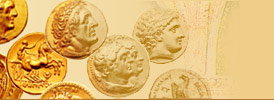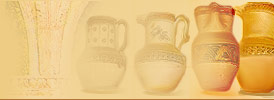Jacques Callot (etcher, engraver)
Brief biography of Jacques Callot
Jacques Callot (1592/3-1635) was born in 1592 in Nancy, the capital of the small province of Lorraine. Growing up in the sophisticated milieu of the nobility and living in a region between Germany, the Netherlands and France, Callot was able to experience diverse cultural and social surroundings, which he later aspired to record in his art. His father had other intentions for the young artist and repeatedly stressed that someday he would either enter the clergy or take over his position as the Herald of Arms and serve the royalty as a designer of court pageants.
In an attempt to prove the seriousness of his artistic goals, Callot fled to Florence for a brief period with a band of gypsies. In a later artistic sojourn to Italy from 1608 until 1611, he toured artistic monuments in Rome, where he studied drawing briefly with Antonio Tempesta and later became an assistant for two years in the Roman atelier of French artist Philippe Thomassin, who trained Callot in engraving. He remained in Rome until 1621, when he returned to Nancy. While studying in Rome, Callot mastered academic skills of naturalistic rendering, which he was able to translate into etchings on copper plates.
Callot never practiced painting and worked exclusively in printmaking, formulating a variety of innovative methods. He invented a new kind of etching needle, the echoppe, which has a flat, oval end with a sharp edge. By twisting the broad end of the needle, Callot was able to vary the thickness of the line cut through the etching ground. Callot also developed a hard ground derived from lutemakers varnish. The combination of the echoppe and the varnish ground resulted in a sharp modulated line that imitated an engraving. He also experimented with an extensive process of multiple biting and stopping out, which produced an extensive variety of printed tones. Moreover, in taking a Northern mode of naturalism and realistic depiction of common everyday reality, Callot combined these traits with Italian classical organization derived from the Carracci to produce a personal, distinctive manner.
During an artistic stay in Florence in 1614, he experienced great pleasure in working under the royal family of Cosimo de Medici. The Medici family was fond of courtly entertainment and most of Callot's etchings focused on the theme of aristocratic spectacle. In establishing his popularity among royal patrons, he was also sought out by Queen Isabella of the Spanish Netherlands. Under her patronage, he executed an etching of the Siege of Breda and many other minor etchings of the life and culture of the Spanish Netherlands. After the publication and eventual circulation of the Siege of Breda print, he was summoned to the court of Louis XIII in France, where he received a number of royal etching commissions.
When the French monarchy under Louis XIII and Cardinal Richelieu besieged Lorraine in 1631 through 1633 in an attempt to annex it, Callot depicted the conflict in his homeland with his most notable series of prints "The Miseries and Disasters of War." In the 1633 etching "Enrolling the Troops" from the large "Miseries and Disasters of War," Callot depicts the enrollment of the soldiers and the preparation of the militia. He leads the viewer's eye in a rhythmic pattern amongst the group of soldiers as the scene recedes along the horizon. He depicts the uniformed leaders as if they are actors in polite consultation, who know nothing of the harsh realities and death that is to come. Moreover, the symmetrical, classical organization of the print and Callot's rational, controlled line seems an ironic contradiction, as the ordered scene is a prelude to the brutal, violent acts of war rendered in vivid detail throughout the remainder of the series.
Indeed, the next print in the series is a dramatic battle scene followed by other prints documenting graphic incidents of military torture and execution. While Callot's exact intentions are not clear in executing the series, his images do appear to condemn unjust conduct in war through a juxtaposition of honorific and savage actions and his etchings inspired other artists such as Goya and Daumier to use prints as a polemical vehicle to critique the senseless practice of war and military injustice.
During the outbreak of the Plague in his province of Lorraine in the early 1630s, Callot sought to offer through his art some spiritual solace for those suffering from sickness. In 1631, he published "The Book of Saints for Every Day of the Year," which contained etched images of four hundred and eighty-eight saints. He also executed a series of etchings titled "The Large Apostles," which feature such figures as Saints Peter and Paul, as well as the print St. Bartholomew included in this exhibition. In making these etchings, they were deeply bitten on plates of copper to enable mass production of the spiritual works, which could be purchased and hung on the wall for private devotion. In his depiction of St. Bartholomew, he fills the page with the image of the saint looking upwards towards heaven.
This link to the heavenly realm is significant, especially for those stricken by the Plague, as a source of reassurance they would achieve salvation. St. Bartholomew is shown holding a knife, an attribute which represents his martyrdom. On the left side of the saint, Callot represents the Christian teachings that Bartholomew conducted in his life, which demonstrates his spiritual devotion. On the right, Callot depicts in the tiny background vivid details of the actual dramatic death and flaying of the saint. Callot's celebrated emulation of engraving through his distinctive etching technique is well demonstrated in this print. For example, the sharply incised intersecting pattern of lines, which describe the dark tones across the richly folded cloak of the saint, appear to have been cut with the hard, precise stroke of a burin.
References
Averill, Esther. "Eyes on the World: The Story of Jacques Callot." New York: Funk & Wagnalls, 1969.
Bechtel, Edwin de T. "Jacques Callot." New York: George Braziller Publisher, 1955.
Brothers, Ann. "Worlds in Miniature: The Etchings of Jacques Callot and Wencheslaus Hollar." Sydney: National Gallery of Victory, 1998.
Griffiths, Antony and others. "Disasters of War: Callot, Goya, Dix." London: The South Bank Centre, 1998.
|
|


